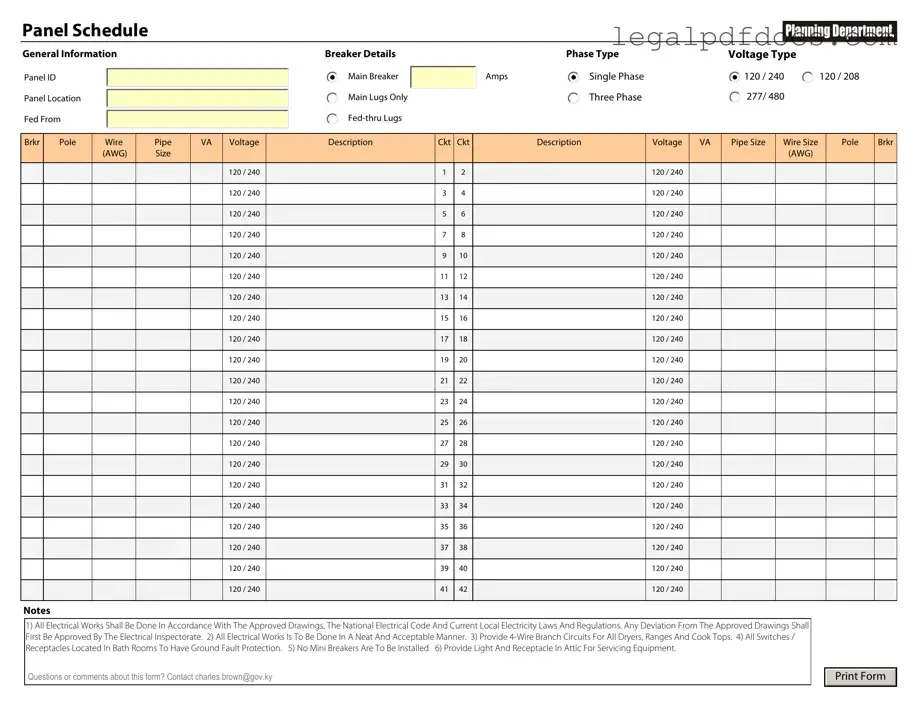Fill Out a Valid Electrical Panel Schedule Template
An Electrical Panel Schedule form is a detailed document that outlines the distribution of electrical circuits within a building. It serves as a crucial tool for electricians and contractors, ensuring proper organization and safety in electrical installations. Understanding how to fill out this form is essential for efficient electrical management.
Start your process by filling out the form by clicking the button below.
Open Electrical Panel Schedule Editor Here
